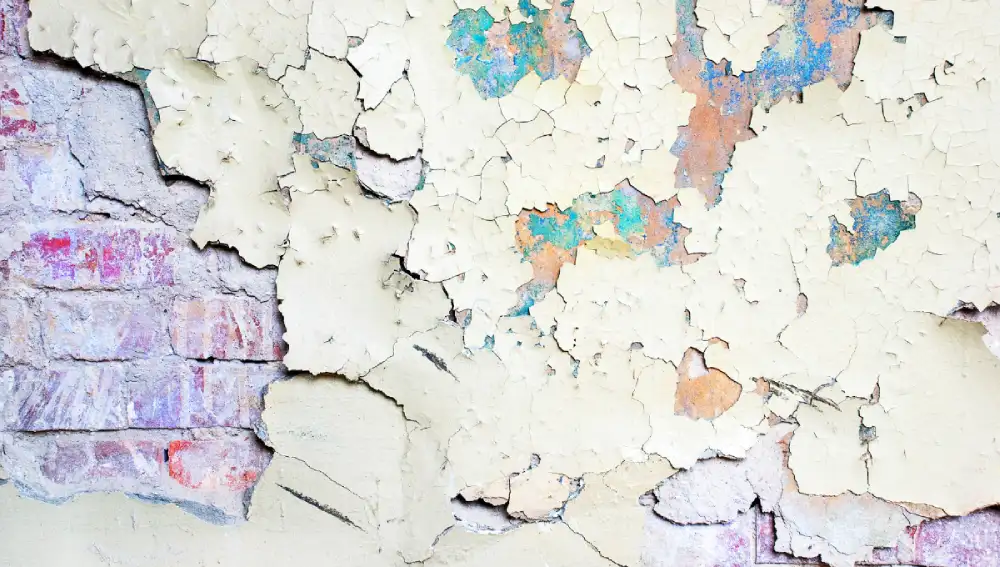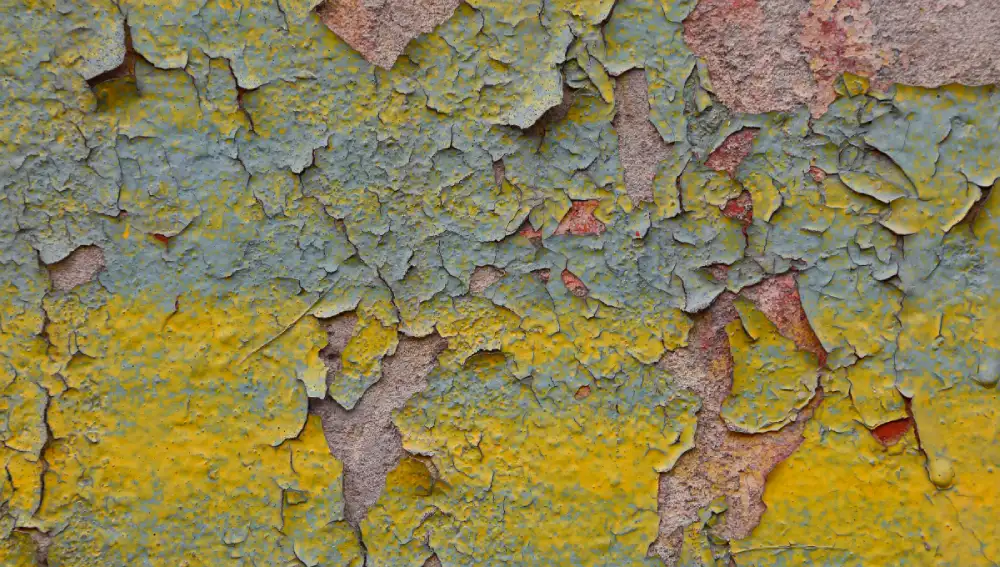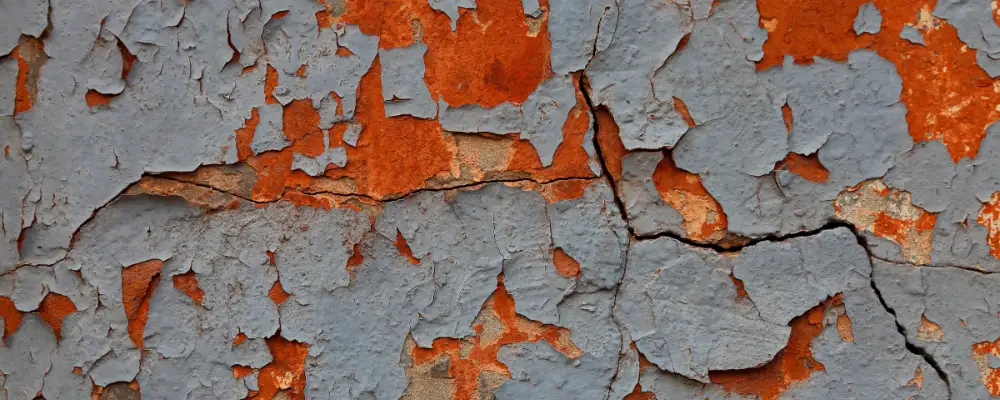Paint does not last forever. It is common to see paint fall from doors, fences, decks, walls, etc. There are various reasons behind the peeling of paint. Multiple factors, such as moisture content, poor surface preparation, and incompatible paint types, can cause damage. But there are also some quick solutions to fix this issue
Understanding its causes, effects, and solutions is essential for maintaining walls and other painted surfaces. Its underlying problems need necessary attention and should be addressed. Paint has the primary purpose of serving protection from. moisture, UV rays, and temperature fluctuation, while enhancing aesthetics.. It is therefore vital to know how to maintain this finish, read on to learn about it.
Causes of Peeling Paint

1. Moisture content
High humidity can lead to excess moisture content. This results in the paint losing adhesive. Water makes its way between the paint and the wall; paint loses strength. It cracks, swells, and then eventually falls off. This is common in bathrooms and other wet areas.
Solution: Use the humidifier and exhaust fan to reduce humidity. This will improve ventilation and control moisture.
2. Poor Surface Preparation
It is important to clean and sand the plastered surface properly before painting. Dust and impurities can peel paint as they result in a loss of adhesion between the wall surface and the paint.
Solution: Ensure that plastered surfaces are smoothened and cleaned well before the painting process begins.
3. Inadequate Priming
It is essential to follow the primer process. Using an effective and quality primer is necessary for the walls. When the primer is incorrectly or inadequately applied, under surfaces can be left exposed, leading to improper adhesion of paint.
Solution: Remove loose paint using a scraper or wire brush. Apply primer properly before repainting.
4. Low-quality paint
Using paint that lacks adhesion properties reduces durability.
Solution: Use well-known paint brands rather than local ones, to ensure good quality and durability.
5. Temperature Extremes
Very cold or hot temperatures can have an impact on the paint. Extreme heat can cause bubbles in the paint surface and lead to peeling.
Solution: avoid painting when the temperature is extreme. Never paint when the surface is wet. Always protect the paint from rain, direct sunlight, and wind.
6. Excessive sunlight
UV rays can break the surface of the paint and create cracks that can develop into peeling surfaces.
Solution: use high-quality and water-repellent paint for outdoor surfaces.
7. Water Leaks
Any leakage during plumbing or from pipes can cause moisture to accumulate and thus lead to peeling.
Solution: Apply a sealant to seal any crack in the roof or walls. Some waterproofing paints are formulated with waterproofing isomers and repellents. This can prevent water leakage and improve the lifespan of the paint.
8. Dirt and Grease
Painting over dirt and grease will lead to peeling of the paint. A clean surface is required before starting the process of painting any surface.
Solution: soap and hot water can be used to clean the grease that appears on the wall.
9. Improper curing
Curing is a process that takes place during the setting of concrete elements . When this curing is not done properly before painting, peeling occurs due to cracks developed in the undersurface of concrete.
Solution: Attention and expert supervision is required during the curing process.
10. Chemical exposure
The walls, when exposed to any harsh chemicals such as acids or alkali solutions, can create a breakdown of paint.
Solution: never use harsh chemicals like strong cleaning agents near the walls. Always try any chemical substance in a small area before using it on the whole wall.
11. Mechanical damage
Physical impacts caused by huge machines or abrasions can damage the wall, affecting the paint and causing it to peel.
Symptoms of Paint Peeling

There are many physical indicators of peeling paint.
- Small to large cracks may appear on the painted surface,primarily due to structural movement or environmental factors. Immediate crack repair and high-quality paint should be used to avoid cracks.
- Bubbles forming can make the paint break. This causes peeling due to moisture traps or painting over a dirty surface. Fix moisture issues or paint in suitable conditions.
- Paint flakes falling off the wall are primarily due to low-quality paint. Sometimes old paint or poor addition can also be a reason. Immediately remove the loose paint and sand the surface. Use high-quality paint as an overlay to cover the surface.
- Chalking is a powdery residue on the paint surface that can result in paint peeling. It is mainly due to UV exposure, which causes degradation. Ensure a clean surface and apply a sealer before painting.
- Paint color changes due to moisture. When water leaks, humidity, or chemical reactions happen, it results in discoloration. The use of moisture-resistant paint is crucial.
- Cracks like alligator skin can appear before the paint peels. Using hard coat paint can cause alligatoring. It can also be due to incompatible paint.
- Paint peeling inof thin layers can be due to poor surface preparation. It is also called scaling.
- Paint surfaces appear as wrinkles. Application of paint in very thin layers can cause wrinkling.
- Paint sagging or dropping down the wall occurs because of high humidity or too much paint coating. Applying paint with the right ratio is essential.
- White powdery deposits called efflorescence occur due to salt deposits. Moisture on the walls creates salt deposits, which cause paint to crack and peel off.
- Black or green spots on the walls indicate mold growth. It is due to poor ventilation, high humidity, and moisture content on the wall. Improving ventilation and using high-quality paint can prevent this
Prevention and Protection
A few tips to follow to prevent peeling of paint and protect painted surfaces are:
- Identifying the cause of the paint peeling is essential. Check if the issue is related to moisture ventilation or any leakage and fix this.
- Lightly sand the plastered wall surface to create a rough texture that can help paint.
- Proper filler selection that is compatible with the paint helps to ensure a uniform finish.
- Apply an undercoat of paint, especially on surfaces that have high porosity.
- Provide adequate drying time for the paint.
- Apply a protective overcoat of paint for the exterior. This acts as an exterior protection and a shield against harsh weather conditions.
Tools used for removing the peels
- A blade or a puffy knife can be used to remove the peeling paint by scraping.
- Loose paint or debris can be removed from the wall using a wire brush.
- Paint scrapers are an effective tool for removing peeling paint. It is applicable for large areas of the wall.
- A five-in-one tool can be used for various purposes like spreading, scraping, and cleaning.
- Fine grip sand paper can provide a smooth surface after scraping to remove the peels.
- Heat Gun: For removing stubborn paint.
- Chemical Paint Stripper: For tough areas (use with caution).
- Electric Sander: For large areas needing sanding.
- Vacuum Sander: To minimize dust.
Conclusion:
Peeling of paint can disturb the look of the wall. Achieving flawless and long-lasting paint involves more than just simple application. It is a comprehensive approach to follow desired preparation and production. The measures mentioned can help overcome the challenges posed by paint peeling. Preparing the surface before starting the wall painting is essential. Usage of the right tools can fix the issue of peeling.
Careful selection of material considering the environmental conditions and drying the surface is important while painting. Investing time and high-quality material can make it durable. Regular maintenance and timely inspection can help prevent the wall from peeling paint. With more advanced technology and tools, taking preventive measures can ensure durability. Cleaning the wall, avoiding water and chemical exposure, and proper ventilation can allow the long-term existence of paint.

